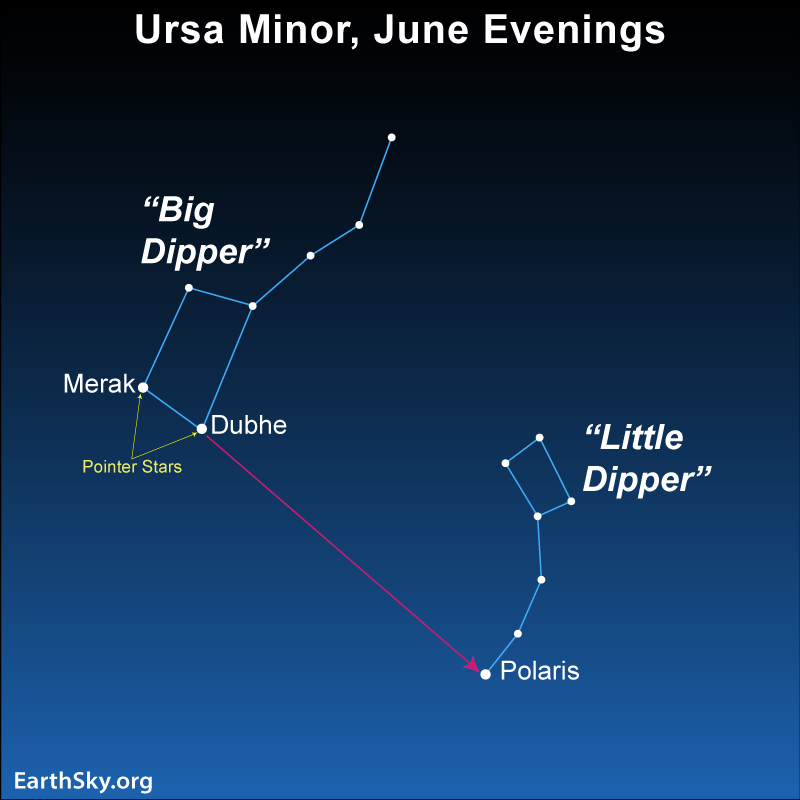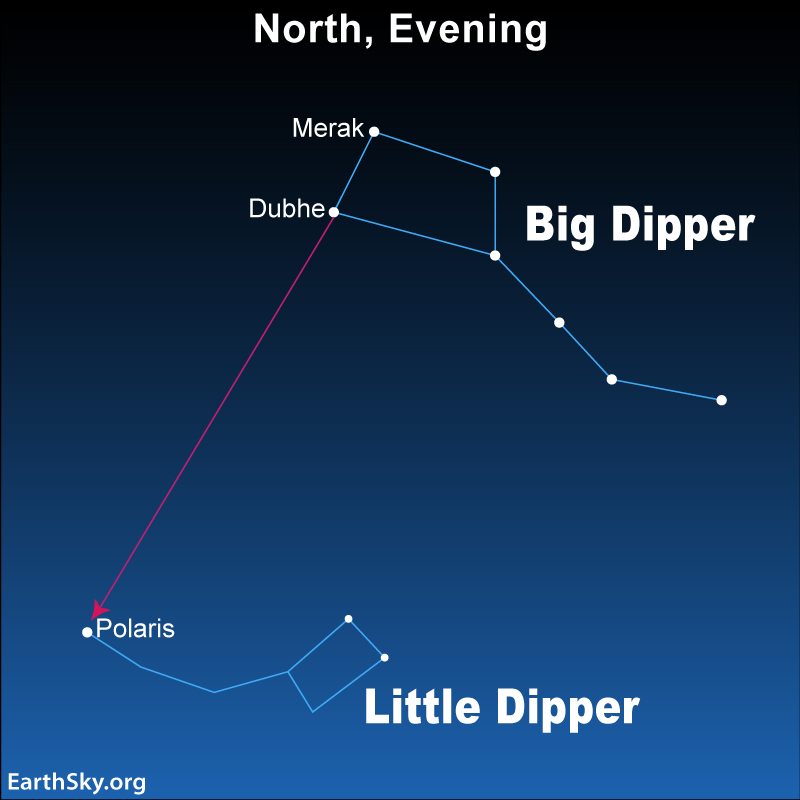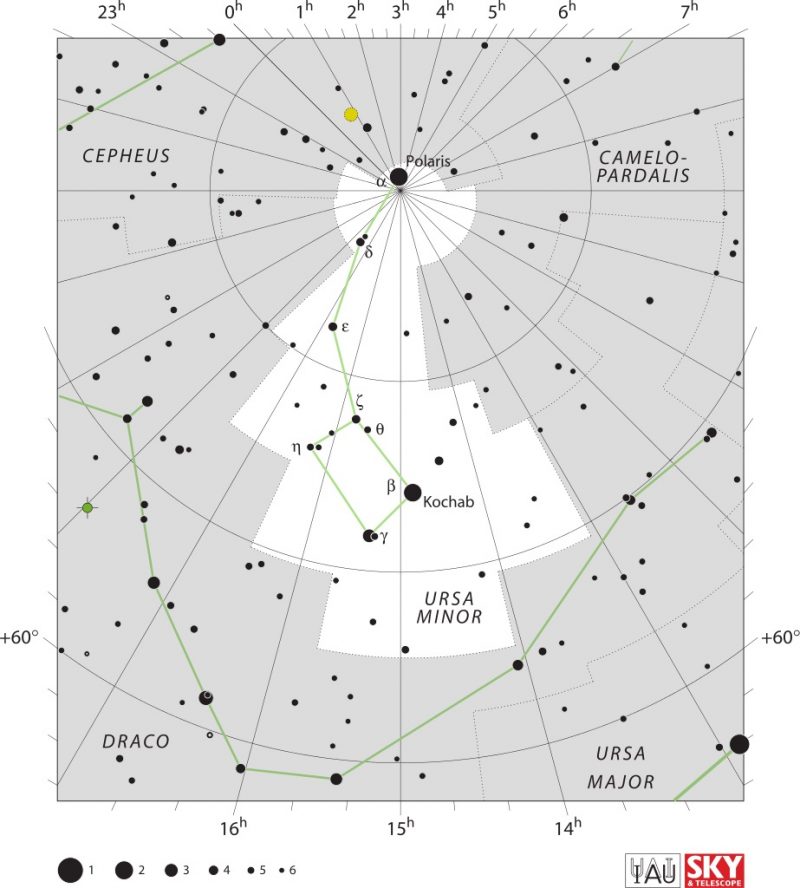
The constellation of Ursa Minor, the Little Bear, is also commonly known as the asterism of the Little Dipper. Ursa Minor has helped sailors and navigators for thousands of years find the north celestial pole and guide them on their journeys.
In mythology, there are many versions of the story of the Greater and Lesser Bears. In general, the story follows the woman Callisto, who is turned into a bear by one of the gods. When her son Arcas meets her in a forest and is about to shoot her (as a bear), Zeus turns him into a bear also. At this point, Zeus placed them close together in the northern sky.
How to find Ursa Minor
In the Northern Hemisphere, Ursa Minor is circumpolar, which means it is up all night, every night. First find the more easily recognizable Big Dipper, then use the pointer stars to get to the Little Dipper. The pointer stars are the last two stars in the bowl of the Big Dipper. After that, draw a line through them and extend it north until you hit the next bright star. This is Polaris, or the North Star.
Polaris is the brightest star in Ursa Minor and stays fixed all night long. Earth’s north pole points almost directly at this star. Therefore, as Earth spins on its axis, it appears that all the other stars in the sky pivot around this point. For travelers heading north, they simply aimed themselves in the direction of the north star. Likewise, for travelers heading west, they kept the north star off to their right side (or starboard side on boats), and so forth. Boy Scouts still learn this helpful rule to orient themselves in the wilderness at night.

The stars of the Lesser Bear
Polaris – the North Star – is the end star in the handle of Ursa Minor and the Little Dipper. Polaris is a magnitude 1.98 star and the brightest star in the constellation. The North Star lies 433 light-years from Earth.
There are two other bright stars in Ursa Minor. However, if you live in a light-polluted area, these three stars may be all you ever see of the Little Dipper, making it hard to correctly identify. The other two bright stars are the stars at the end of the bowl of the Little Dipper. Kochab is a 2.08 magnitude star 130 light-years away. Pherkad is a slightly dimmer 3.05 magnitude star lying 487 light-years away.
You can check to see how light-polluted your location is by seeing if you can trace the shape of the Little Dipper by spotting the rest of the stars between Polaris and Kochab and Pherkad. The remaining stars range from magnitude 4.2 to 4.9. To find a dark-sky location, check out EarthSky’s Best Places to Stargaze.

Deep-sky objects in Ursa Minor
In addition, there is one deep-sky object of note in the Little Dipper, and that is only because of its close proximity to the north celestial pole. You’ll need a large telescope and a dark-sky site in order to spot it. Polarissima Borealis, or NGC 3172, is a 14.9 magnitude galaxy about 1 1/2 degrees southeast of Polaris. This round fuzzball is the “most northern” deep-sky object.
Bottom line: Ursa Minor is the Lesser Bear, but you might know it as the Little Dipper. Also, its brightest star is Polaris, the North Star.











